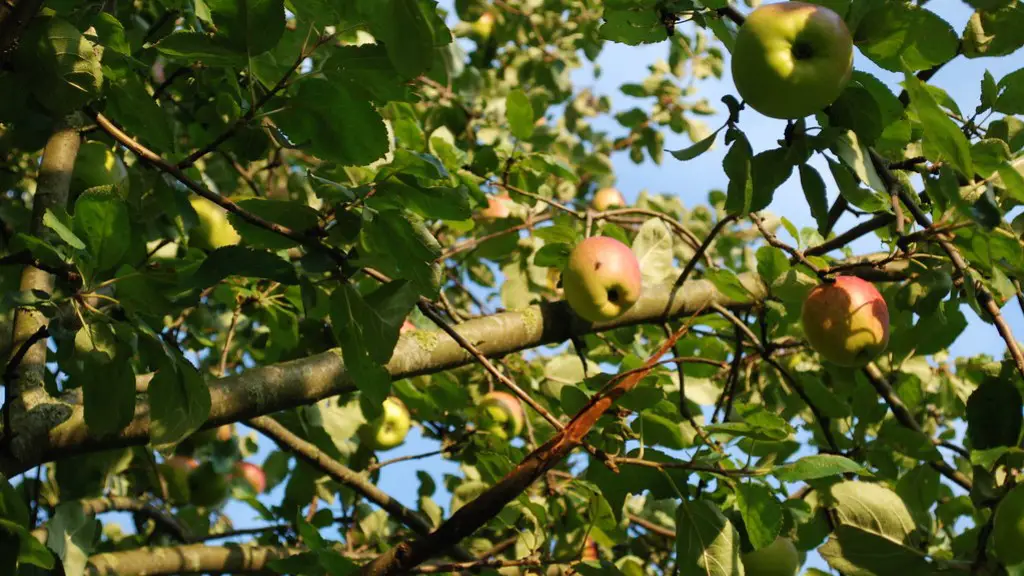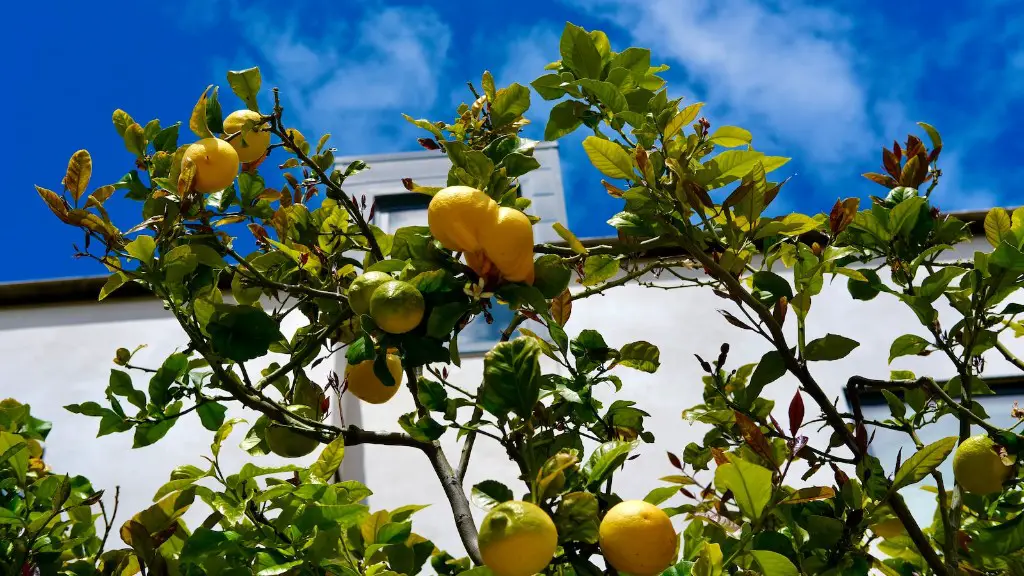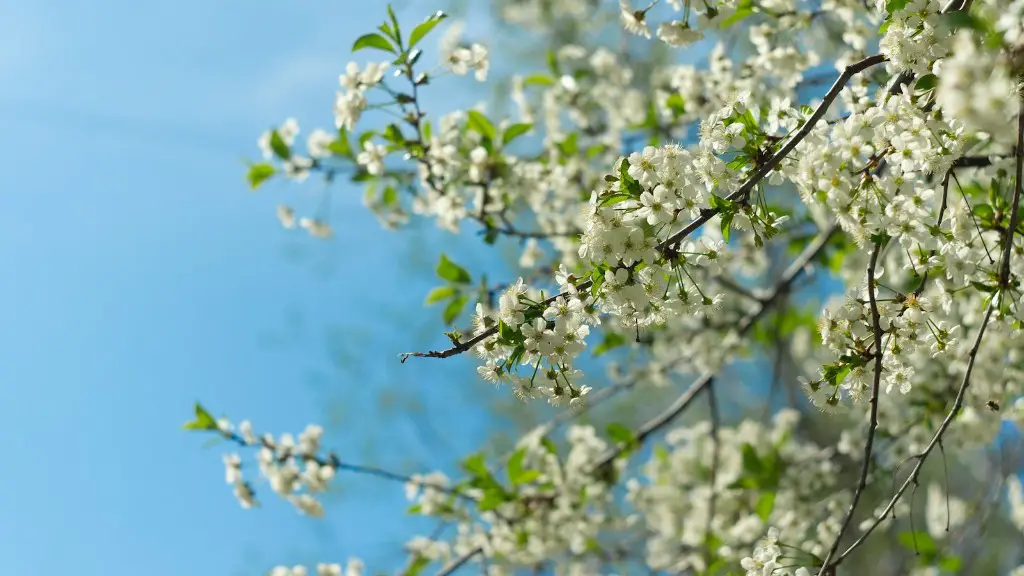Definition and history
A Hass avocado tree is a type of avocado tree which is one of the most popular varieties of avocado. It is known for its dark green and wrinkled skin, as well as its rich and creamy taste. The Hass avocado tree is originally from the United States and was first planted in California by Rudolph Hass in 1926. From there, the Hass avocado tree spread around the globe.
Growing in a pot
It is possible to grow a Hass avocado tree in a pot, although some differences exist between greenhouse-grown plants and potted plants. Most notably, a potted tree will not produce fruit unless it is given the proper care and fertilizer. This can be done by a knowledgeable gardener or with the help of a local nursery. Additionally, the pot size and soil used should be suitable for the particular variety of Hass avocado tree.
Benefits
The most obvious benefit of growing a Hass avocado tree in a pot is that it can be ideal for a small outdoor space, patio, or balcony. It also allows for easy transplanting if need be. Additionally, since the tree is growing in a pot, it can be brought indoors during colder weather.
Drawbacks
However, there are some drawbacks associated with growing a Hass avocado tree in a pot. The biggest issue is that it will require extra attention with regards to soil quality, water, and other environmental factors. Additionally, the tree must be pruned regularly in order to maintain its shape and prevent it from becoming overgrown.
Pruning
To keep your Hass avocado tree healthy and productive, it’s important to prune it regularly. This should be done when the tree is still young, as this will ensure that it is well-shaped. Additionally, pruning will also help to remove any dead branches or old fruit. Pruning can be done with a pair of shears or clippers, and it’s important to be careful and not to cut too close to the trunk.
Fertilizing
In addition to regular pruning, it’s also important to fertilize your Hass avocado tree. This should be done in early spring and midsummer with a fertilizer that is high in nitrogen, phosphorus, and potassium. Additionally, this fertilizer should also be applied once a month during the growing season.
Irrigation and water
Ensuring that your Hass avocado tree has enough water is also crucial. The soil should be kept moist but not soggy, and water should only be applied to the soil and not directly to the tree. Additionally, it’s important to water at least once a week, depending on the climate, to keep the plant properly hydrated.
Sunlight and temperature
For optimal growth, your Hass avocado tree should be exposed to direct sunlight for at least six hours a day. Additionally, it should be protected from cold temperatures and strong winds. A temperature range of 60 to 85°F should be maintained in order to promote good flowering and fruit production.
Pest and disease control
It’s important to keep an eye out for pests and diseases that may harm your Hass avocado tree. Common pests include scale, mealybugs, borers, and white flies, while fungal diseases such as root rot and leaf spot may also be present. If present, these pests and diseases must be managed using appropriate methods such as pruning and fungicides.
Harvest and storage
Once your Hass avocado tree has mature fruit, it is time to harvest. The fruit should be harvested when it is firm and dark green, and it should be stored at room temperature for several weeks to allow it to ripen. Ripe fruit can then be stored in the refrigerator for several weeks.
Propagation
Propagating a Hass avocado tree can be done either from seed or through grafting. Growing from seed is the easiest option, but the tree will take much longer to produce fruit. Grafting, on the other hand, is more complex but will yield fruit much faster.
Care tips
In order to ensure that your Hass avocado tree is healthy and productive, there are a few tips to keep in mind. Water it regularly and make sure the soil is well drained. Provide it with plenty of sunlight and adequate fertilizer. Also, be sure to prune it regularly and protect it from pests and diseases.
Group planting
To increase yields of Hass avocado fruit, the trees can be planted in groups. Planting them in pairs is the most effective way, as it encourages cross-pollination and increases the production of fruit. Additionally, the trees should be planted in shady areas to prevent them from becoming too dry.
Container selection
The selection of a suitable container for your Hass avocado tree is important, as it can have a significant effect on its growth and yield. The size of the container should be proportional to the size of the tree, and it should also be aerated and have good drainage. Additionally, a light-colored container will help to reflect sunlight and keep the tree from getting too hot.
Pruning techniques
When pruning your Hass avocado tree, it is important to use the correct technique. Start by removing any dead or damaged branches and then focus on removing water sprouts. Thin out any branches that are growing too close together and open up the tree’s canopy to let more light in. Finally, prune back any overly long branches.
Fertilizer types
When it comes to fertilizing your Hass avocado tree, there are two main types of fertilizer available: organic and synthetic. Organic fertilizer is typically made from natural ingredients such as compost or manure, while synthetic fertilizer is made from chemical compounds. Both types of fertilizer will provide essential nutrients, but organic fertilizers are generally more abundant in trace minerals.
Watering methods
It is important to water your Hass avocado tree correctly in order to keep it healthy and productive. Depending on the climate, the tree may need to be watered once a week or more often. When watering, it is best to use a watering can and water at the base of the tree to avoid wetting the leaves and flowers. Also, be sure to water deeply to ensure that the roots are getting the proper moisture.



